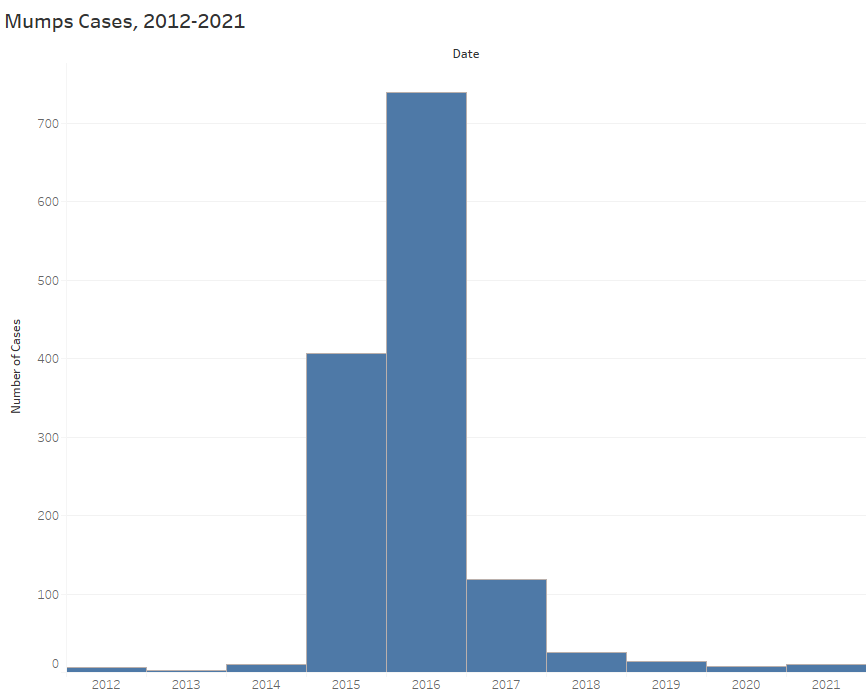Mumps
Definition
Mumps is an infection caused by the mumps virus. Before a routine vaccination program was introduced in the United States, mumps was a common illness in infants, children and young adults. Because most people have now been vaccinated, mumps has become a rare disease in the United States.
Mumps is reportable to the Iowa Department of Public Health by Iowa Administrative Code 641 Chapter 1.
Symptoms
The most common symptoms are fever, headache, muscle aches, tiredness, and loss of appetite and swollen salivary glands under the jaw. The disease can lead to hearing loss, aseptic meningitis (infection of the covering of the brain and spinal cord) and, in 20% to 30% of males who have reached puberty, the disease can cause painful, swollen testicles.
Causes
Mumps is spread by droplets of saliva or mucus from the mouth, nose, or throat of an infected person, usually when the person coughs, sneezes or talks. Items used by an infected person, such as cups or soft drink cans, can also be contaminated with the virus, which may spread to others if those items are shared. In addition, the virus may spread when someone with mumps touches items or surfaces without washing their hands and someone else then touches the same surface and rubs their mouth or nose.
Risk Factors
Vaccination is the best way to avoid infection with the mumps virus. International travel, and close-contact living, such as dormitories are some of the risk factors for mumps infection.
Prevention
- Vaccination
- Cover your mouth and nose with a tissue when you cough or sneeze, and put your used tissue in the trash can. If you don’t have a tissue, cough or sneeze into your upper sleeve or elbow, not your hands.
- Wash hands well and often with soap, and teach children to wash their hands too.
- Don’t share drinks or eating utensils.
- Regularly clean surfaces that are frequently touched (such as toys, doorknobs, tables, counters) with soap and water or with cleaning wipes.
- People infected with mumps should not go back to child care, school, work, or other public places until 5 days after symptoms began or until they are well whichever is longer.
- Contacts to a mumps case should have their immunization status evaluated. Anyone who is not immune and has not received 2 doses of a mumps-containing vaccine should be vaccinated. Two doses of mumps-containing vaccine, given as combination MMR vaccine, separated by at least 4 weeks, are routinely recommended for all children. The first dose is given on or after the first birthday; the second is given at 4 - 6 years of age. MMR is a live, attenuated vaccine. Pregnant women and persons with immunodeficiency or immunosuppression should not receive live attenuated vaccines.
- Persons who may have been exposed should be educated on the signs and symptoms of mumps disease and should seek medical attention as soon as any of these symptoms begin.
Treatment
There is no specific treatment. Supportive care should be given as indicated.
Statistics
In 2021, there were 10 cases of mumps reported in Iowa.
For more detailed information and statistics on all notifiable diseases, please see our current annual report located in the reports section of the CADE homepage.

Additional Resources
Public
Public Health
Schools
Business and Childcare
Health Care Providers